When I moved to the East of France in 2019, I had no idea how much there was to see and do.
I’ve since spent years exploring popular cities like Lyon and searching for lesser-known ones, like Nancy.
And I can, honestly, say that there’s a lot to do here.
This part of the country sits in the shadow of more popular regions like Provence, but I’ll show you that it’s just as charming and full of must-see spots.
In this guide, I’ve put together a 10-day itinerary that will take you through some of the most beautiful cities, charming countryside, and delicious food of Eastern France.
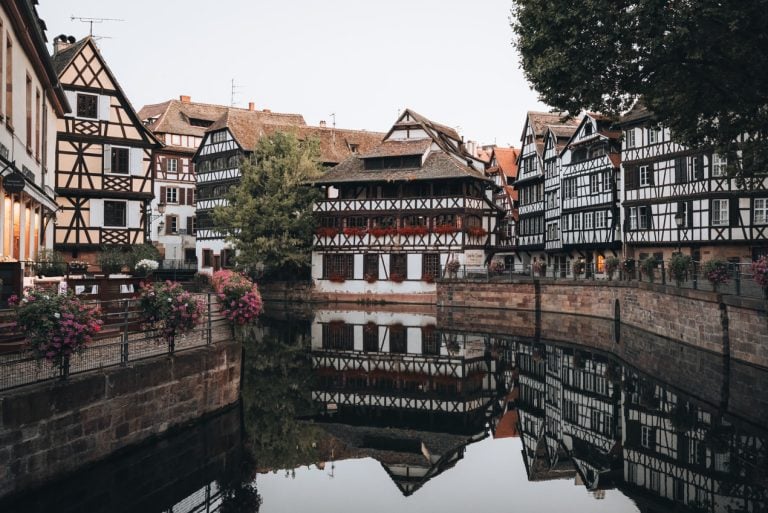
Please note: This post contains affiliate links, meaning I may earn a commission if you make a purchase by clicking on a link (at no extra cost to you). Privacy Policy.
Day 1: Reims

This itinerary assumes you’ll be arriving in Paris.
So, in the morning, you’ll travel from Paris to Reims.
Trains run regularly from Paris’ Gare de l’Est station to Reims and take about 45 minutes.
Once you’ve arrived, you’ll find there are lots of things to do here, but you can visit Reims’ highlights in a day.
Below are the activities that I recommend:
- Reims Cathedral: Built in the 12th century, this is where the kings of France were crowned. And, in 1991, it was listed as a UNESCO World Heritage Site.
- Palais du Tau: This museum is next to the Reims Cathedral. It’s where banquets were held after the coronation ceremonies. Most of the exhibits are centered on these events. There’s even a replica of the Coronation Chalice.
- Tour a Champagne House: Reims is the capital of Champagne, and there are tons of wineries to visit. My top recommendations are Champagne Mumm, Champagne G.H. Martel & C°, and Champagne Charles de Cazanove.
- Musée de la Reddition: This museum is housed in the former Allied headquarters. It showcases the events that led to Germany’s surrender at the end of World War II. You can even visit the “map room” where it all took place.
- Basilique Saint-Remi: Another beautiful church in Reims. It holds the relics of Saint Remi, who baptized Clovis, King of the Franks, around 499.
- Biscuiterie Fossier: Founded in 1756, this is the oldest biscuiterie in the country. These bright pink treats were served at Louis XVI’s coronation ceremony and later became the sole producer of biscuits for the king.
Helpful Tip: You can buy your train tickets on the SNCF-Connect website or app.
Day 2: Nancy
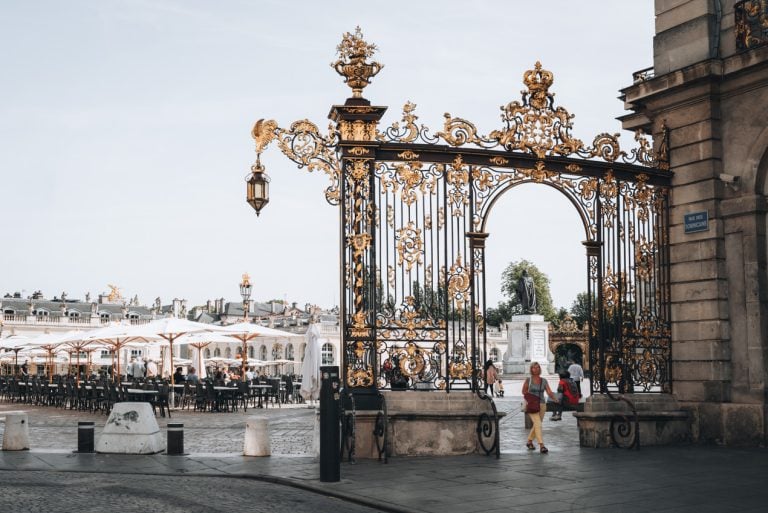
Like Reims, Nancy is small enough to visit in a day.
You’ll take the train from Reims to Nancy in the morning (90 minutes).
Once you’ve arrived, you can start exploring.
Below are the activities and things to do that I recommend:
- Place Stanislas: This beautiful square was listed (along with Place de la Carrière and Place d’Alliance) as a UNESCO World Heritage Site in 1983. It’s famed for its architecture, particularly the wrought-iron gates and white stone buildings.
- Visit a Park: There are three parks in Nancy – Parc de la Pépinière, Saint Mary Park, and Jardin Dominique Alexandre Godron. Each is a little escape from the city. My favorite being Parc de la Pépinière.
- Visit a Museum: Nancy has tons of museums. My favorites were the Musée des Beaux-Arts, the Musée de l’École de Nancy, and the Musée Lorraine.
- Porte de la Craffe: This is the oldest monument in Nancy. It dates to the 14th century and was used as an entrance to the city before it was converted into a prison.
- Villa Majorelle: This was one of the first examples of Art Nouveau architecture in the country. You can tour the gardens and the interior, which has even more pieces from this era.
- Macarons de Nancy: The Macarons de Nancy are a meringue-based cookie only found here. They are light and not too sweet. My favorites were from Maison des Soeurs Macarons.
Days 3 and 4: Strasbourg
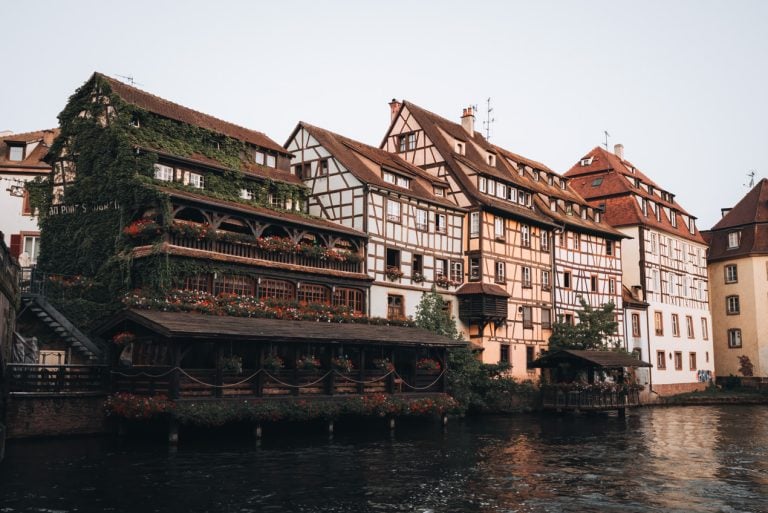
Days three and four will be dedicated to Strasbourg, the capital of Alsace.
You’ll take the train from Nancy to Strasbourg (60 minutes).
I’ve written an extensive guide on how to spend two days in this Alsatian city, but below is a quick summary of the must-see attractions.
- Strasbourg Cathedral: This stunning Gothic cathedral dominates the city skyline with its towering spire. Be sure to climb the 330 steps to the top for a panorama of Strasbourg.
- La Petite France: This picturesque neighborhood is where you’ll find charming half-timbered houses surrounded by canals and cobbled streets. Some must-visit spots are Place Benjamin Zix, Pont Saint Martin, and Quai de la Petite France.
- Alsatian Museum: Learn about the culture and history of Alsace at this museum. Exhibits feature traditional crafts, local customs, and regional folklore.
- Batorama Tour: Take a boat tour through Strasbourg’s canals and learn about its history. My favorite tour was the Red Tour. It’s a 70-minute route that goes around Grand Île and all the way to the European Parliament.
- Parc de l’Orangerie: Take a break from the bustling city and spend some time in Strasbourg’s largest park. There are walking paths, playgrounds, paddle boats for rent, and green spaces to picnic.
- European Parliament: Strasbourg is one of the four capitals of Europe and home to the European Parliament. You can visit via an audio-guided tour and learn how the EU functions. Admission is free.
- Alsatian Food: Strasbourg is the foodie city of Alsace, in my opinion. Some of my favorites are choucroute garnie and tarte flambée. Check out my restaurant guide for my top recommendations on where to try these dishes.
- Neustadt: Built when Strasbourg belonged to Germany from the late 19th to the early 20th century. It’s mostly known for its architecture, particularly in Place de la République, but St. Paul’s Church and the Planetarium are also worth checking out.
Day 5: Colmar
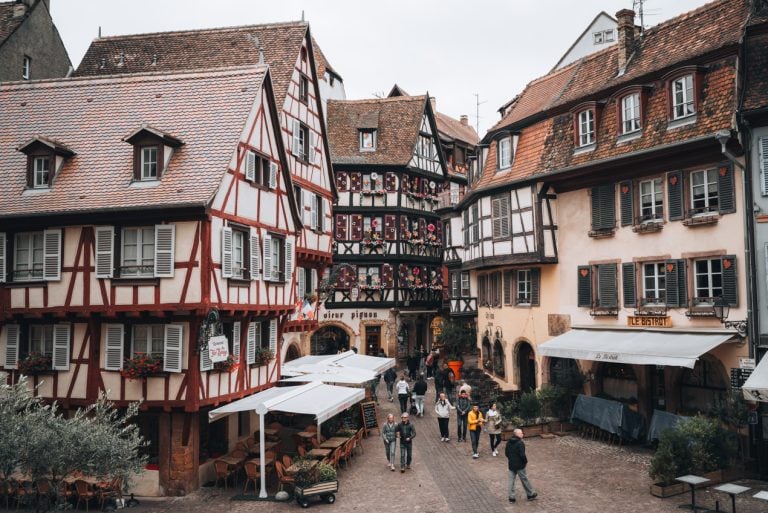
On the morning of day four, you’ll travel from Strasbourg to Colmar.
Trains are frequent and take about 30 minutes.
Once you arrive, you can either walk to Colmar’s town center or take the Navette Coeur de ville.
Keep in mind that Colmar is smaller than Strasbourg, so it’s easy to see the highlights in a day.
Below are Colmar’s highlights:
- Unterlinden Museum: This is one of the most visited museums in Alsace. It’s home to an impressive collection of works dating to prehistoric times. But its most well-known piece is the Isenheim Altarpiece from the early 15th century.
- Gondola Ride: The Lauch River flows through Colmar’s Little Venice, and a gondola ride is the best way to visit. You’ll also learn about the history and culture of the area. I recommend Sweet Narcisse, that’s the company I used.
- Alsace Wine Museum: Alsace is famous for its wine, and Colmar is in the heart of the wine route. This museum takes you through the history of wine and its cultivation in Alsace. Then, at the end, you’ll get to taste three different wines.
- Old Town: This is where you’ll find Colmar’s old-world architecture, especially along Grand Rue and Rue des Marchands. The Pfister House, Le Fer Rouge, and the House of Heads are all worth checking out.
- Little Venice: This charming city is known for its colorful half-timbered houses, the most beautiful of which are in the Little Venice neighborhood. The most photogenic street is Quai de la Poissonnerie.
- Covered Market: This lively indoor market is full of vendors selling local products. There’s also a café at the back with a terrace on the Lauch River.
Day 6: Dijon
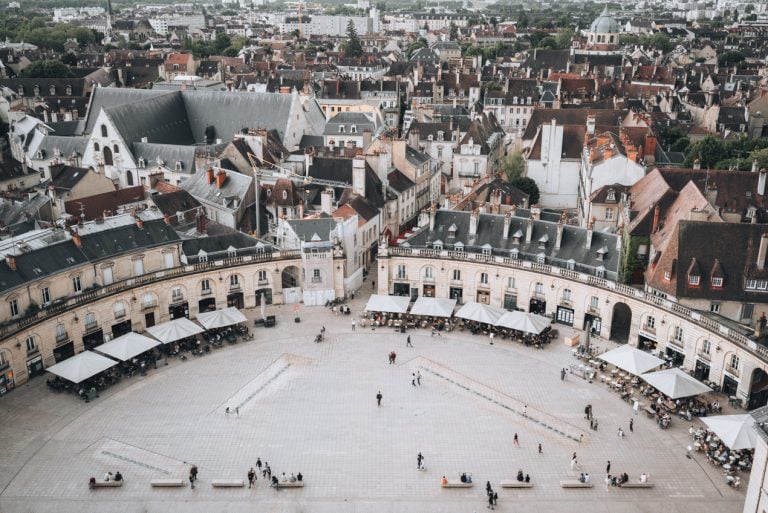
On day six, you’ll leave Alsace and head to the capital of Burgundy, Dijon.
From Colmar’s Central Station, take the train to Dijon. The journey takes about two hours, and, in most cases, you’ll need to change trains in Mulhouse.
Dijon is a city rich in history and culture. There are plenty of things to do here, but 24 hours is enough.
Below is a list of Dijon’s highlights that you won’t want to miss:
- The Dijon Owl Trail: This self-guided walking tour is the best way to see Dijon. Check out my complete guide for more details.
- Palais des Ducs et des États de Bourgogne: This palace is a masterpiece of architectural design. Not only that, but it’s also home to the Musée des Beaux-Arts, which has free admission. You can even go up the tower (Tour Philippe le Bon) for an incredible view of the city.
- Musée de la Vie Bourguignonne: This museum showcases Burgundy during the 19th and 20th centuries. There are life-sized exhibits that show the inside of houses and shops. It’s the best museum in town.
- Place François Rude: Named after the famous sculptor, François Rude, this is the most popular square in Dijon. It’s also where you’ll find Au Moulin à Vent (the red and white half-timbered building).
Day 7: Beaune
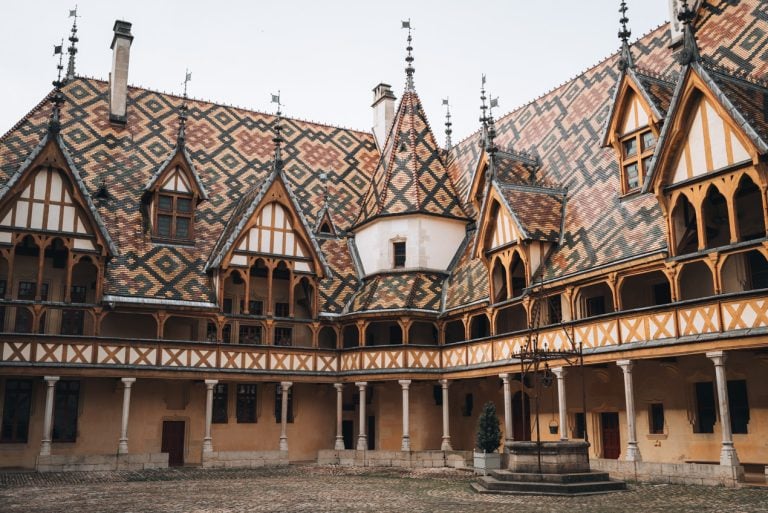
Next, you’ll head to Beaune.
Trains leave regularly from Dijon and take 35 minutes.
Helpful Tip: Beaune can be done as a day trip from Dijon.
It’s smaller than Dijon, but there are still lots of things to see and do.
I’ve written a guide on how to spend a day in Beaune, so I will only list the highlights below.
- Visit a Wine Cellar: Unlike Dijon, Beaune has several wine cellars. Most offer tours and wine tastings. My top recommendations are Domaine Chanson, Maison Champy, and Bouchard-Aîné & Fils.
- La Moutarderie Fallot: This iconic mustard mill has been producing mustard since 1840. You can tour the factory and learn how mustard is made. I even got two free jars to take home at the end of the tour. Reservations are recommended.
- Hôtel-Dieu Museum – Hospices de Beaune: Founded in 1443, the museum began as a charitable hospital dedicated to caring for the poor. Today, it showcases Beaune’s architecture and the evolution of healthcare. Reservations are recommended.
- Remparts de Beaune: These are Beaune’s former defensive fortifications. You can walk along the main wall and learn about the town’s history. There are information boards and QR codes at each monument.
- Musée du Vin – Hôtel des Ducs de Bourgogne: Located in the former residence of the Dukes of Burgundy, this museum showcases the history and production of wine in Burgundy.
Days 8, 9, and 10: Lyon
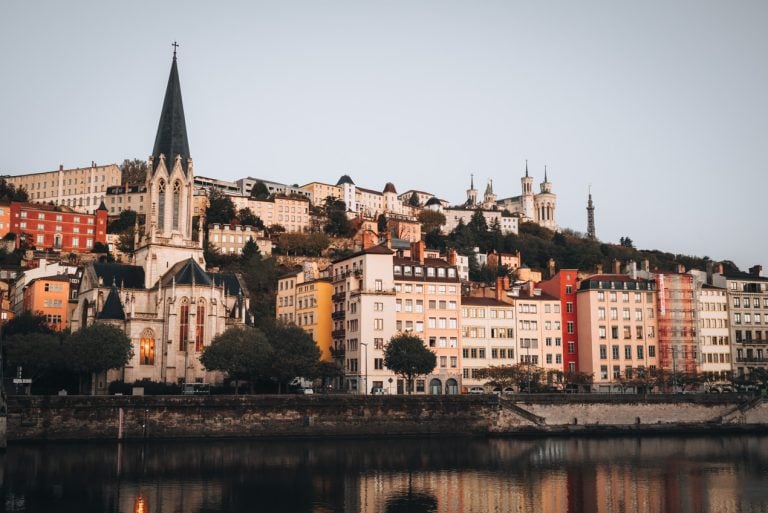
After a day in Beaune, you’ll head to the heart of the Auvergne-Rhône-Alpes, Lyon.
From Beaune, you’ll need to head back to Dijon. From there, trains leave for Lyon hourly and take two hours.
I’ve written a complete guide on how to spend three days in Lyon.
Below, I highlight the must-visit sites:
- Vieux Lyon: This is Lyon’s Old Town. It sits between the banks of the Saône River and is lined with Renaissance-era mansions. This is where you’ll find the most beautiful architecture in the city, including the Cathédrale Saint-Jean-Baptiste.
- Visit a Museum: There are tons of museums in Lyon. Some of my favorites were the Musée Miniature et Cinéma, Lugdunum – Musée et Théâtres romains, La Maison des Canuts, and the Museum of Illusions.
- Traboules: Lyon has several hidden passageways known as traboules. The first of these appeared in the fourth century but proved the most useful during World War II. Today, you can explore these hidden passageways. The most popular is the Cour des Voraces (Entrances at Place Colbert, Montée Saint-Sébastien, and Rue Imbert-Colomès).
- Lyon’s Frescoes: These giant murals depict everyday scenes in life-size proportions. The most famous are: La Fresque des Canuts, La Fresque des Lyonnais, and La Bibliothèque de la Cité.
- Fourvière Hill: This is one of the prettiest neighborhoods in Lyon. Top sites include Basilique Notre Dame de Fourvière, the Ancient Theatre of Fourvière, Lugdunum – Musée et Théâtres romains, and the Jardin des Curiosités.
- Parc de la Tête d’Or: This is the largest park in Lyon. Stroll along a walking path, admire the gardens, or picnic in a grassed area.
Helpful Tip: If you prefer spending two days in Lyon, I recommend visiting Annecy for a day. It’s two hours by train.
Conclusion
Eastern France is my favorite part of the country. It combines everything that makes France special – food, wine, landscapes, history, and culture.
This itinerary is designed to take you through the best it has to offer. I recommend visiting in spring or fall when the crowds are fewer, but either way, you’ll have an incredible trip.
Next, I recommend checking out my guide on getting around France without a car. There are train travel tips and other useful resources available to help you plan your trip.
Read More Articles
I hope you enjoyed my post and found it helpful. Here are some other articles that I think you might find interesting.
- 33 Incredible Things to Do in Lyon
- Where to Stay in Strasbourg: Best Areas and Hotels
- Is Colmar Worth Visiting? 19 Reasons Why You Should!
- 18 Incredible Things to Do in Beaune, France